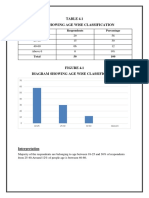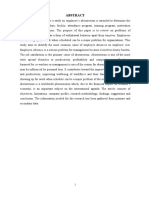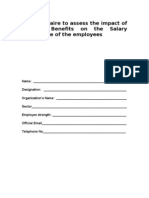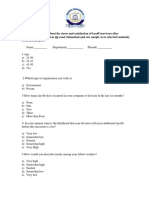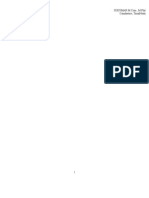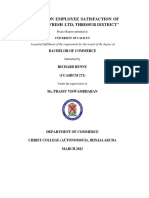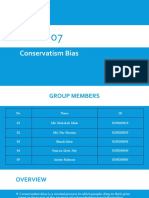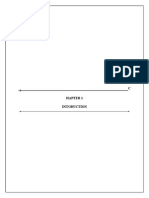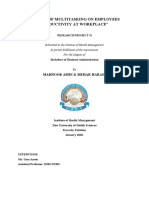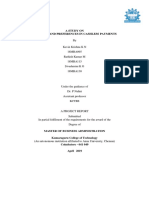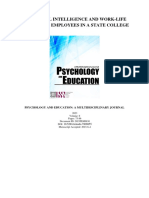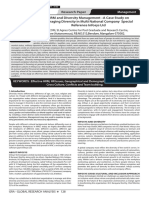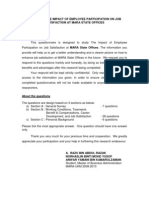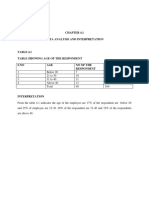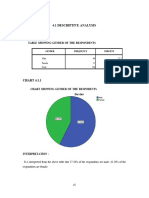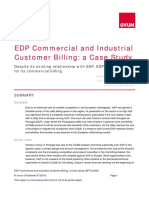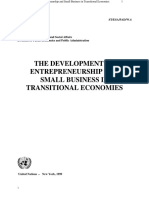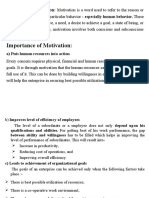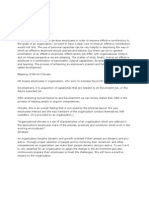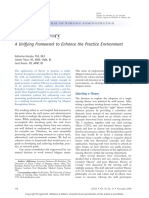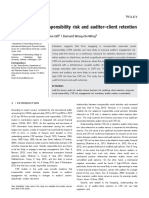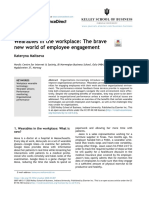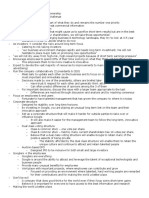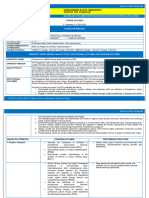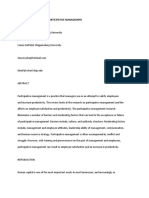0% found this document useful (0 votes)
1K views18 pages1.1 Table Showing Gender of Respondent: SL No Particular Respondents Percentage (%)
The document contains survey results from 50 respondents on demographics and HR practices at a company. Key findings include:
- 66% of respondents were male and 34% female.
- 58% of respondents were between 21-30 years old, while 32% were 31-40 years old.
- The majority (36%) of respondents had a PUC education level.
- 54% of respondents had 1-5 years of work experience.
- Motivational lectures and employee counseling were identified as the most effective ways to deal with employee stress.
- 70% responded that the company has an employee counselor.
- The majority strongly agreed or agreed that counseling increases employee efficiency
Uploaded by
Sharath NaikCopyright
© © All Rights Reserved
We take content rights seriously. If you suspect this is your content, claim it here.
Available Formats
Download as DOCX, PDF, TXT or read online on Scribd
0% found this document useful (0 votes)
1K views18 pages1.1 Table Showing Gender of Respondent: SL No Particular Respondents Percentage (%)
The document contains survey results from 50 respondents on demographics and HR practices at a company. Key findings include:
- 66% of respondents were male and 34% female.
- 58% of respondents were between 21-30 years old, while 32% were 31-40 years old.
- The majority (36%) of respondents had a PUC education level.
- 54% of respondents had 1-5 years of work experience.
- Motivational lectures and employee counseling were identified as the most effective ways to deal with employee stress.
- 70% responded that the company has an employee counselor.
- The majority strongly agreed or agreed that counseling increases employee efficiency
Uploaded by
Sharath NaikCopyright
© © All Rights Reserved
We take content rights seriously. If you suspect this is your content, claim it here.
Available Formats
Download as DOCX, PDF, TXT or read online on Scribd
/ 18




